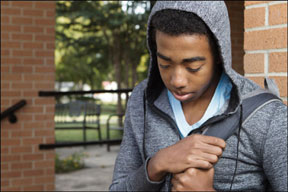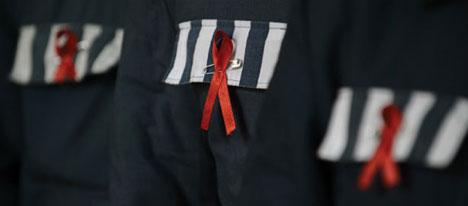
 CDC Data should spur action to protect the health and wellbeing of lesbian, gay, and bisexual youth
CDC Data should spur action to protect the health and wellbeing of lesbian, gay, and bisexual youth
Lesbian, gay, and bisexual high school students face two to three times higher risk for bullying than their heterosexual peer.
From AIDS.gov
CDC recently released the first nationally representative data on the health risks of lesbian, gay, and bisexual (LGB) high school students. These data show that the approximately 1.3 million LGB youth in this country experience physical and sexual violence and bullying at levels 2 to 3 times higher than their heterosexual peers.
Data from CDC’s Youth Risk Behavior Surveillance System show that LGB youth are significantly more likely to report
* Being forced to have sex (18% vs 5%)
* Sexual dating violence (23% vs. 9%)
* Physical dating violence (18% vs. 8%)
* Being bullied at school or online (at school: 34% vs. 19%; online: 28% vs. 14%)
Rape, dating violence, and bullying are health dangers on their own for any young person. But when combined with other risk factors and the absence of support, such actions can place young people at risk for severe consequences. The data show that more than 40% of LGB students seriously considered suicide and approximately 30% reported attempting suicide in the past year. Sixty percent reported having been so sad or hopeless that they stopped doing some usual activities, more than one in 10 missed school because of safety concerns, and LGB students were up to five times more likely than other students to report using several illegal drugs.
The data are a call to action. There is no simple solution to address these risks, but research does point to the importance of support for LGB youth in a variety of settings. For example, comprehensive, community-wide prevention efforts can reduce the risk of multiple types of violence for LGB and other vulnerable youth. Schools can build an environment that provides a sense of safety and connection for all students, including lesbian, gay, and bisexual youth. Parents can help foster resiliency by providing strong family support and teaching all adolescents non-violent problem-solving skills. We all can raise awareness of the urgent prevention needs of these vulnerable young people.
CDC and partners are taking action by funding, implementing, and evaluating programs that address many of these health risks and supporting solutions, including violence prevention, developing tools for education partners to promote healthy school environments for all students, forging national partnerships, and providing scientific leadership.
But, clearly, we must do more. Many of our current efforts address key factors that can place any young person at risk. There are some proven school-based interventions that reduce negative outcomes for youth, but few have been evaluated among LGB youth. Research that helps to rapidly develop effective school, community, and parent-based interventions could lay the groundwork for reducing the painful and untenable dis-parities among students. Greater understanding of the many and varied needs of our young people can help us create and maintain communities where all young people can experience adolescence without threats of violence or bullying so that all can have the full opportunity to become healthy and productive adults.
By Dr. Jonathan Mermin, MD, MPH, (RADM, USPHS), Director, National Center for HIV/AIDS, Viral Hepatitis, STD, and TB Prevention, Centers for Disease Control and Prevention Cross-posted from CDC Morbidity and Mortality Weekly Report



Be the first to comment